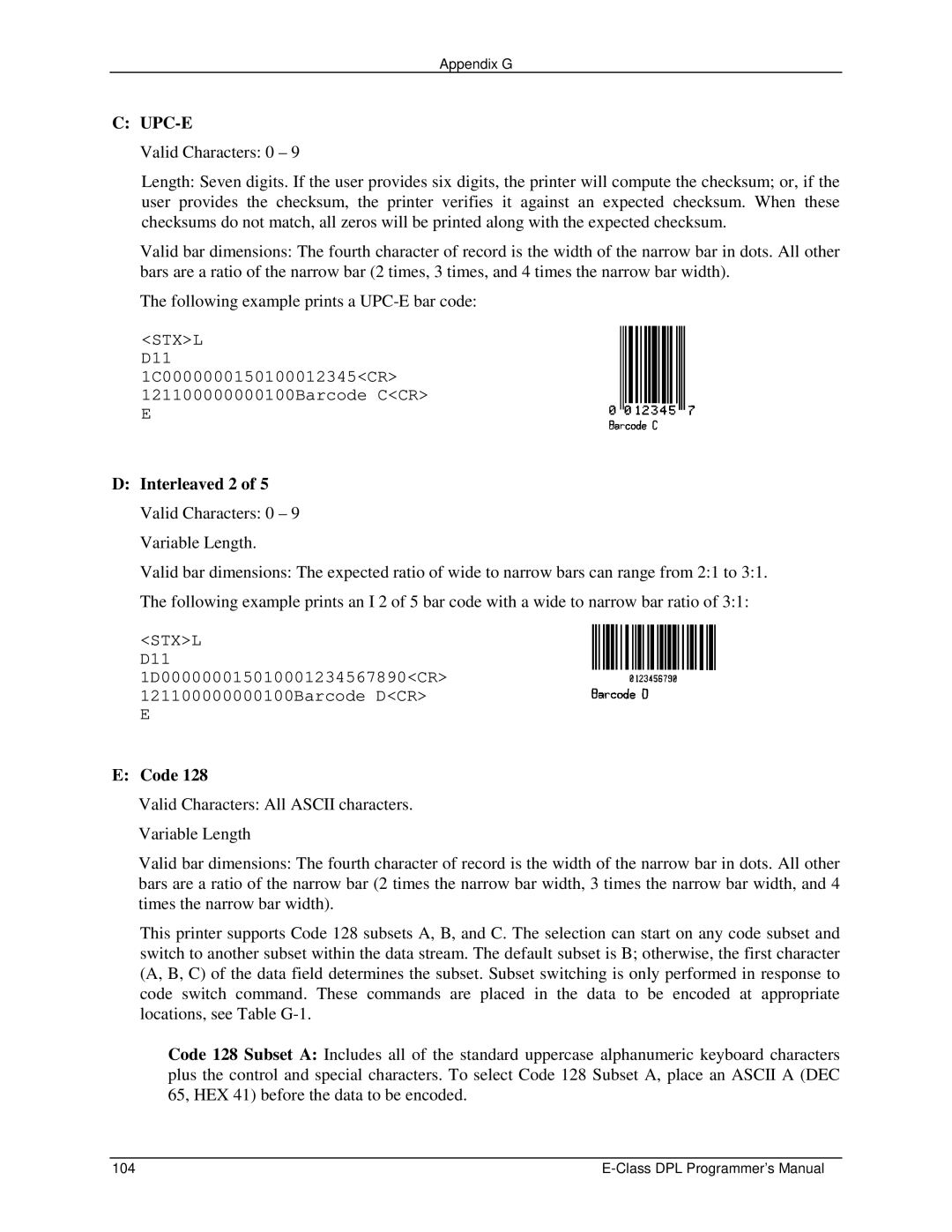
Appendix G
C:UPC-E
Valid Characters: 0 – 9
Length: Seven digits. If the user provides six digits, the printer will compute the checksum; or, if the user provides the checksum, the printer verifies it against an expected checksum. When these checksums do not match, all zeros will be printed along with the expected checksum.
Valid bar dimensions: The fourth character of record is the width of the narrow bar in dots. All other bars are a ratio of the narrow bar (2 times, 3 times, and 4 times the narrow bar width).
The following example prints a
<STX>L
D11
1C0000000150100012345<CR> 121100000000100Barcode C<CR>
E
D:Interleaved 2 of 5 Valid Characters: 0 – 9 Variable Length.
Valid bar dimensions: The expected ratio of wide to narrow bars can range from 2:1 to 3:1. The following example prints an I 2 of 5 bar code with a wide to narrow bar ratio of 3:1:
<STX>L
D11
1D000000015010001234567890<CR> 121100000000100Barcode D<CR>
E
E:Code 128
Valid Characters: All ASCII characters. Variable Length
Valid bar dimensions: The fourth character of record is the width of the narrow bar in dots. All other bars are a ratio of the narrow bar (2 times the narrow bar width, 3 times the narrow bar width, and 4 times the narrow bar width).
This printer supports Code 128 subsets A, B, and C. The selection can start on any code subset and switch to another subset within the data stream. The default subset is B; otherwise, the first character (A, B, C) of the data field determines the subset. Subset switching is only performed in response to code switch command. These commands are placed in the data to be encoded at appropriate locations, see Table
Code 128 Subset A: Includes all of the standard uppercase alphanumeric keyboard characters plus the control and special characters. To select Code 128 Subset A, place an ASCII A (DEC 65, HEX 41) before the data to be encoded.
104 |
